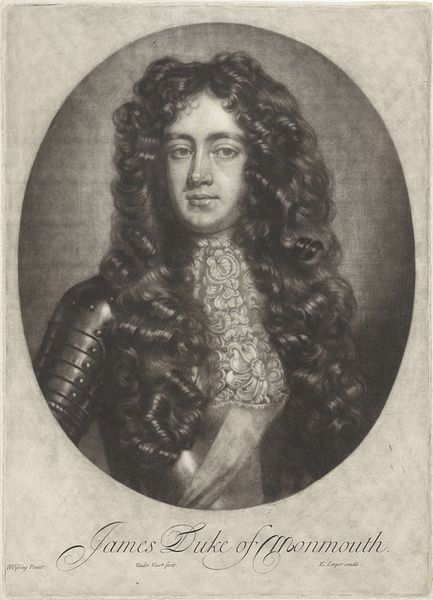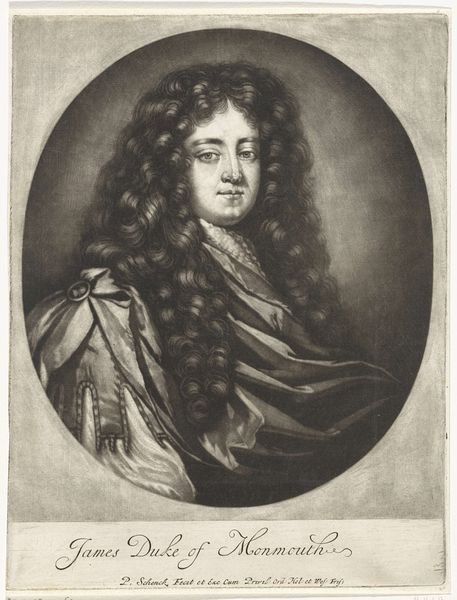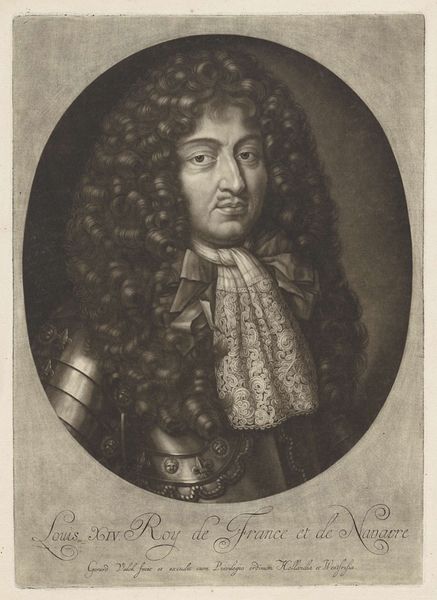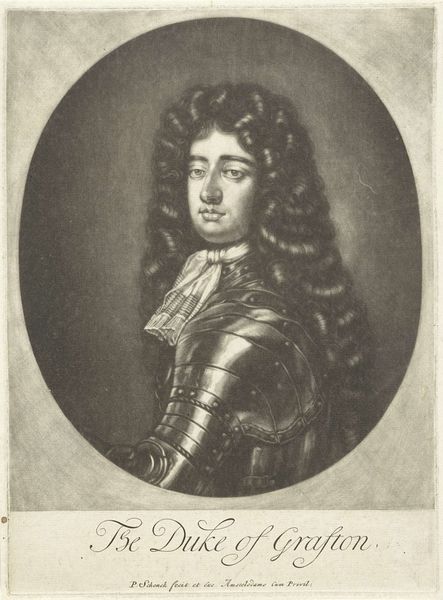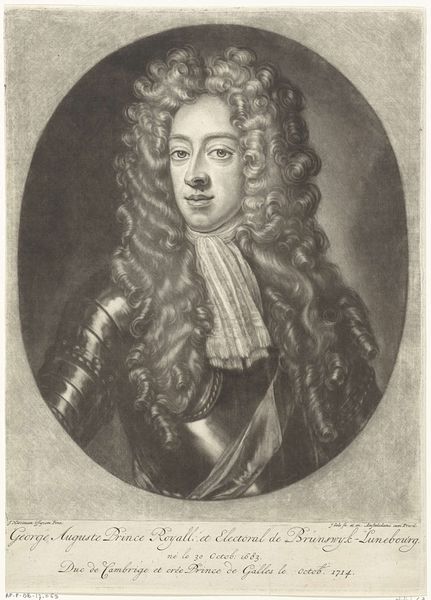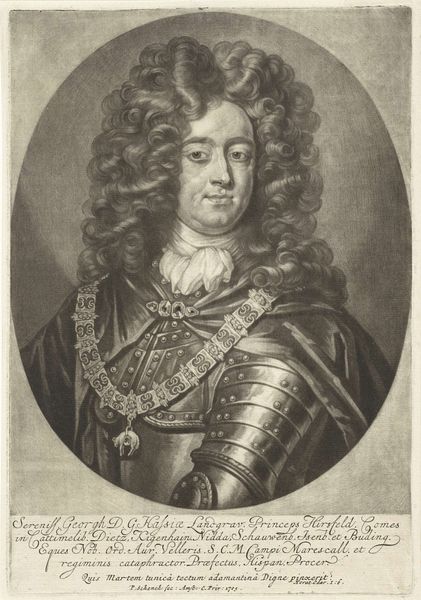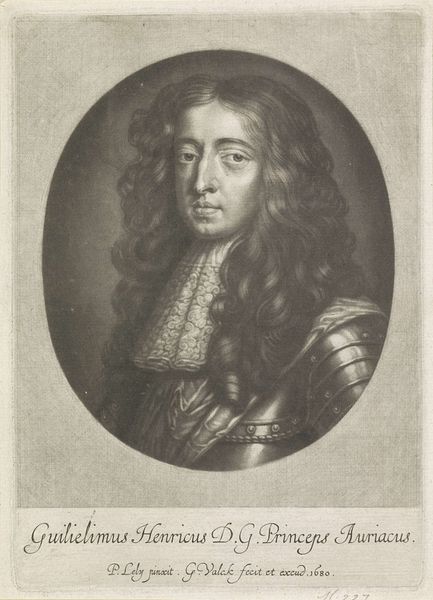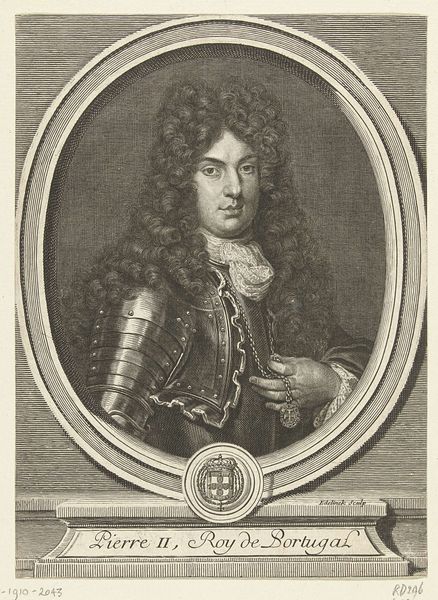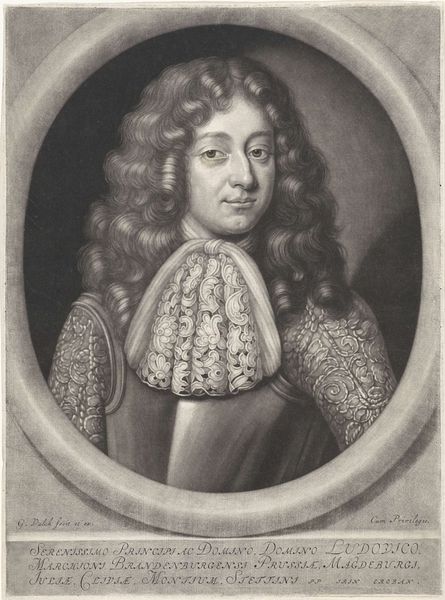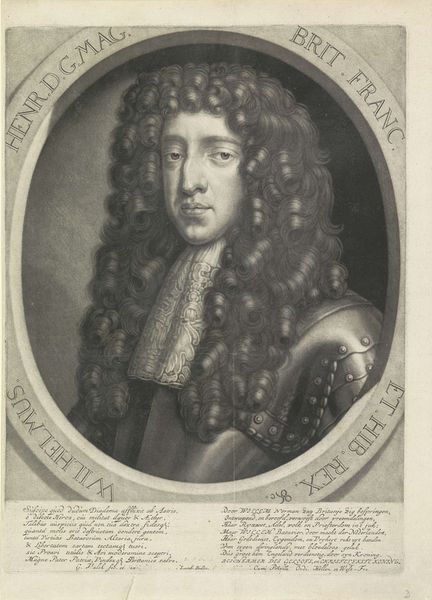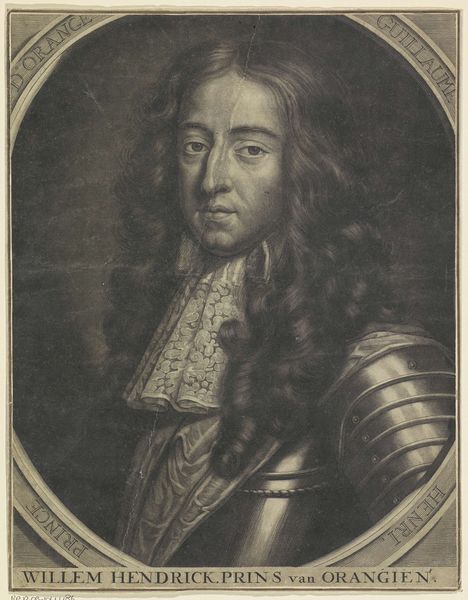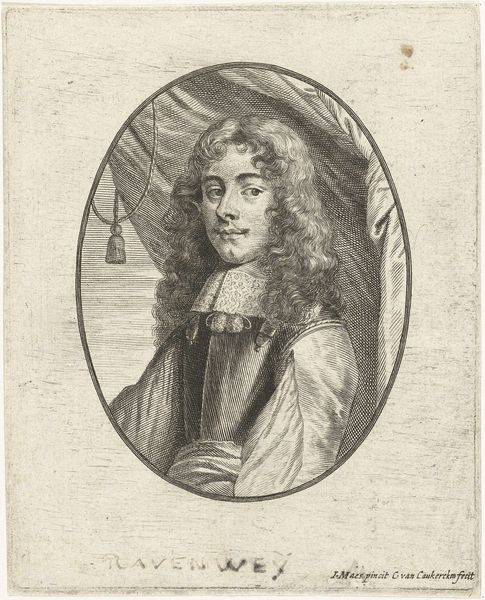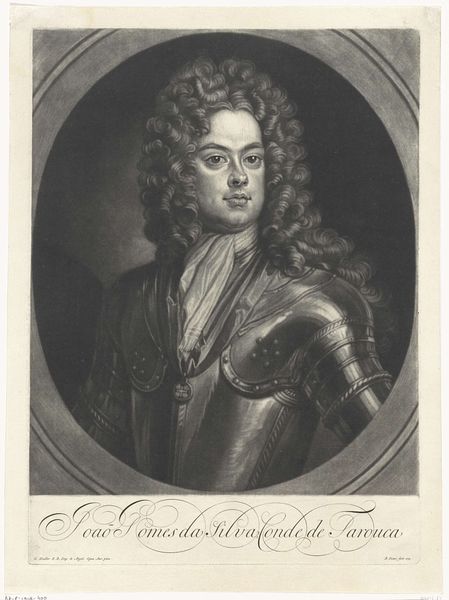
engraving
#
portrait
#
baroque
#
charcoal drawing
#
pencil drawing
#
line
#
history-painting
#
engraving
Dimensions: height 333 mm, width 246 mm
Copyright: Rijks Museum: Open Domain
Curator: Pieter Schenk’s engraving, "Portret van James Scott hertog van Monmouth", likely created between 1670 and 1713, presents us with an intriguing visual experience, rendered through what appears to be meticulously crafted lines and shading. Editor: It strikes me immediately as rather melancholy. The subject's gaze is soft, almost mournful. The restricted palette amplifies this feeling, don’t you think? It feels heavier somehow. Curator: Indeed, the grayscale medium significantly shapes the emotional tenor. However, let's observe how Schenk uses the very tools of line and tone to model form and texture. Notice the almost obsessive detail in the rendering of the lace collar and the cascading curls of his wig. The use of hatching and cross-hatching is remarkable for creating depth and volume. Editor: While I appreciate the skill involved, my interest lies more with the production itself. How does the act of engraving – the labour, the materials – affect the image we perceive? The precision of line comes from the burin's controlled scrape across the metal. Every mark is a physical exertion. What does this say about the sitter? This deliberate process contrasts sharply with the seemingly effortless appearance of aristocracy. Curator: Precisely. And the printmaking process allowed for wider dissemination, for this image to circulate amongst different classes of society, shaping and reinforcing perceptions of power and status. Editor: I'd argue it exposes, rather than reinforces. The means of production is rarely apparent in portraits of nobility. By laying bare the labor of image creation, doesn't the work subconsciously level its subject somewhat, reminding us of the artifice involved in crafting a noble image? Curator: That’s a fascinating point; it gives a unique lens for re-examining how we analyze images of status. This artwork becomes a complex study of subject and form. Editor: Agreed, analyzing this particular image through material consideration grants fresh new insights on the conditions for displaying status. Thank you!
Comments
No comments
Be the first to comment and join the conversation on the ultimate creative platform.
